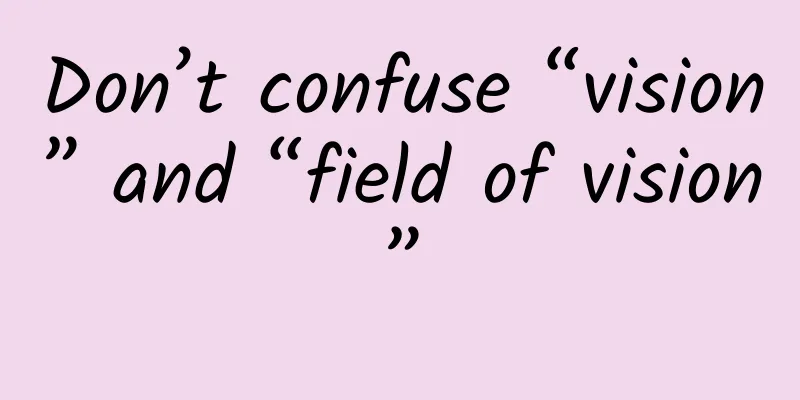Don’t confuse “vision” and “field of vision”

|
The ability of the eyes to distinguish the image of an object or recognize details within a certain distance is called vision. It is generally measured by the minimum distance between two points on an object that the eyes can distinguish. Physiologically, human vision is divided into two categories: far vision and near vision. As the name suggests, far vision mainly refers to the ability of the eyes to distinguish distant objects, while near vision refers to the ability of the eyes to recognize small targets nearby. The quality of a person's vision mainly depends on two factors: one is the function of the photoreceptor cells on the retina, and the other is the function of the eye's refractive system. If there is a problem in any of the above two factors, vision will deteriorate. What about "visual field"? Visual field is also called peripheral vision. When one eye is fixed on a point in front of it, the spatial range that can be perceived by the peripheral vision of the eye is called visual field, which mainly reflects the visual function of the retina except the fovea. Different people have different fields of vision, and even the same person's two eyes have different fields of vision. The size of the field of vision is affected by factors such as the bone structure of the face, the brightness of the object, and the color of the object. Generally, people with big eyes and protruding eyeballs have a wider field of vision; people with smaller eyes have a relatively smaller field of vision. Due to the influence of the protruding nose bridge, the outer field of vision of the eye is larger than the inner field of vision; in addition, under the same brightness of light conditions, the field of vision measured with targets of different colors is also different. The white field of vision is the largest, followed by yellow and blue, then red, and the green field of vision is the smallest, mainly because the distribution range of photoreceptors of different colors in the retina is different. After knowing this, can you explain why traffic lights use red to indicate stop and green to indicate passage? Source: Chongqing Industry-University-Research Cooperation Promotion Association Author: Li Ge, Professor of Chongqing Medical University Audit expert: Mao Yi Statement: Except for original content and special notes, some pictures are from the Internet. They are not for commercial purposes and are only used as popular science materials. The copyright belongs to the original authors. If there is any infringement, please contact us to delete them. |
<<: GLP-1 drugs, the nemesis of obesity and diabetes, are becoming popular all over the world.
>>: Is childbirth so painful an evolutionary bug?
Recommend
iOS 15.5 Beta3 baseband upgrade, better signal?
This morning, Apple pushed the iOS 15.5 Beta3 upd...
TV games can also be played like this. LeTV game console brings arcade pleasure
Speaking of fighting games, if you tell me that y...
Klein Blue, a popular color in the fashion world for 60 years
Blue is the most essential color of the universe....
Unmanned freight transportation is favored by giants and may become the first scenario for autonomous driving to be implemented
The technical maturity and safety of driverless v...
ASUS POSEIDON-GTX 980Ti Graphics Card Review: Belief and Performance
When the first graphics card of ASUS Poseidon ser...
8 Big Data Analysis Models - User Model (I)
A model refers to a formal expression of a practi...
Sir Tang said: Live Screen Recording Column + Live Streaming Required Column
Sir Tang said: Live Screen Recording Column + Liv...
Detailed explanation of the three major issues of user activity, retention, and loss
Before solving a problem, do you want to understa...
Nissan and Mitsubishi's new generation of X-Trail will provide plug-in hybrid version
According to Taiwanese media reports, the new gen...
Facebook shut down its artificial intelligence system overnight. Has AI really surpassed human cognition?
With the rapid development of artificial intellig...
Home appliance giants are focusing on smart home: seizing a market worth hundreds of billions
Apple (647.35, 2.53, 0.39%), a giant in today'...
Learn ASO from scratch: 10 minutes to learn the basic methods of ASO
Introduction: ASO , which is the abbreviation of ...
Operational tips: In the early stage of promotion, should we use WeChat or App?
The author of this article is Qianniu Xujin, form...
Wang Chengshu: The "Three Plum Blossoms" in the Nuclear Physics Community
*Academician Wang Chengshu Memorial Hall The Nucl...
The United States investigates Tesla cars. Car accident analysis shows that automatic driving has hidden dangers and cannot recognize lights
Tesla is one of the most well-known autonomous dr...









